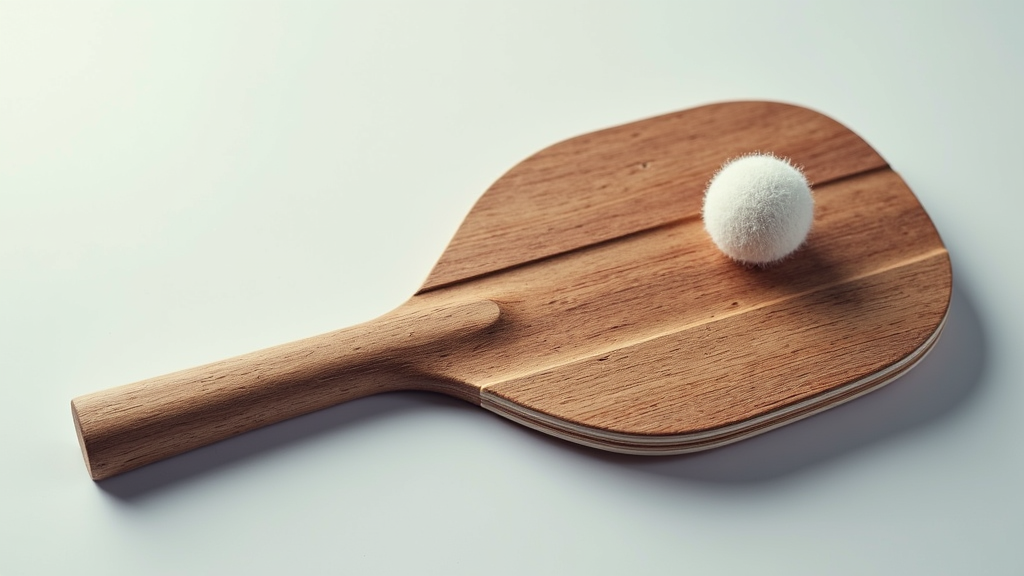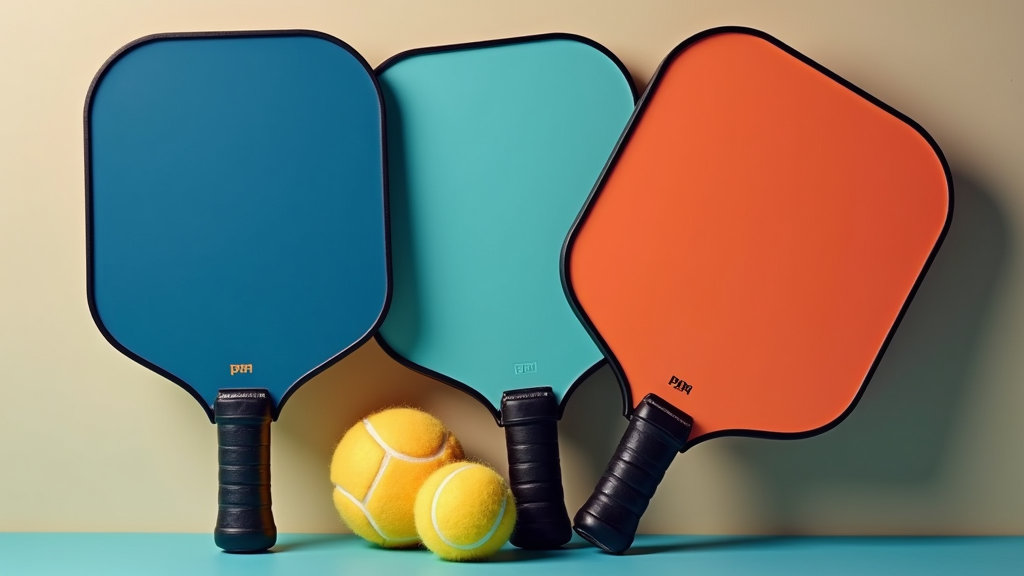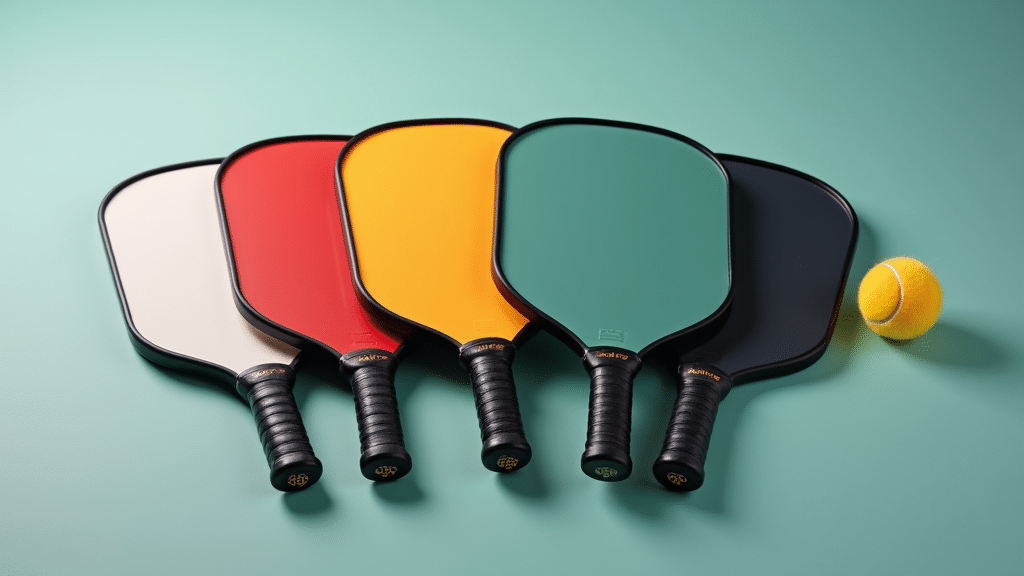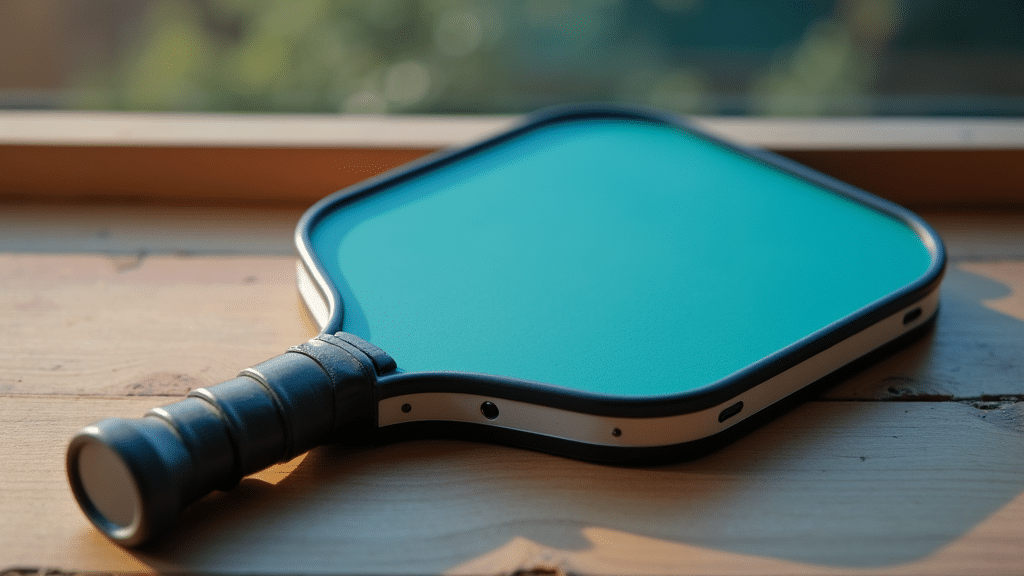Table of Contents
- Introduction
- Understanding the Basics of Pickleball Spin
- Detailed Guide to Choosing the Best Paddle for Spin
Introduction

Overview and Importance of Spin in Pickleball
Pickleball has evolved rapidly in recent years, transitioning from a friendly backyard game to a highly competitive sport. With this evolution, the importance of spin has surged, largely driven by an influx of former tennis players bringing their spin-centric strategies to the court. Mastering spin in pickleball is no longer just a fancy trick; it’s a fundamental skill that can dictate the cadence of a point, force opponents into awkward shots, and ultimately provide a significant competitive edge.
Spin allows players to control the ball’s trajectory, bounce, and behavior after it hits the ground, making it an invaluable asset. Consider this: spin rates can exceed 2000 RPM on drives and serves when using the right paddle and technique. This level of spin enhances control, allowing for more aggressive play near the net and baseline. A well-placed topspin drive can dip sharply into the kitchen, while a backspin dink can die softly, making it incredibly difficult for your opponent to attack. By adding spin to your game, you’re not just hitting the ball; you’re strategically manipulating it to your advantage.
Furthermore, spin drastically improves serve effectiveness. A topspin serve kicks high and deep, pushing your opponent off the baseline and disrupting their return. Conversely, a slice serve can stay low and skid unpredictably, forcing errors and setting up easy put-aways. In short, understanding and utilizing spin is crucial for players looking to elevate their game and compete at a higher level.
Background of Spin-Focused Paddle Technology
The journey to spin-friendly pickleball paddles has been an interesting one. In the early days of pickleball, paddles typically had slippery surfaces, which severely limited spin potential. These older paddles were primarily designed for control and placement, with little consideration given to generating significant spin. The materials used simply didn’t offer the grip necessary to impart rotation on the ball effectively.
However, recent advancements in composite and graphite materials have revolutionized paddle technology, dramatically enhancing spin capabilities. One notable development is the introduction of “liquid graphite” and textured surfaces. These innovations increase the friction between the paddle and the ball, allowing players to generate significantly more spin with the same amount of effort. The textured surfaces essentially “grab” the ball, enabling a more pronounced rotation during contact.
Among the various materials available, carbon fiber hitting surfaces stand out as providing the most texture conducive to spin. The unique weave and composition of carbon fiber create a naturally abrasive surface that maximizes ball grip. This allows players to generate incredible amounts of topspin, backspin, and sidespin, opening up a whole new dimension of strategic play.
What You’ll Learn in This Guide
This guide is designed to equip you with the knowledge and understanding necessary to harness the power of spin in your pickleball game. We’ll delve into the core concepts that contribute to spin generation in pickleball paddles, breaking down the science behind how different materials and designs affect your ability to impart rotation on the ball. You’ll learn about the key characteristics to look for in a paddle if spin is your priority.
Beyond theory, we’ll focus on practical applications. We’ll provide actionable advice on choosing the right paddle to maximize your spin potential on the court. Whether you’re a beginner looking to add a new dimension to your game or an experienced player seeking to fine-tune your equipment, this guide will provide valuable insights and recommendations to help you elevate your performance and dominate the court with spin.
Understanding the Basics of Pickleball Spin
Fundamental Concepts of Spin
Pickleball spin can add a whole new dimension to your game, turning simple shots into strategic weapons. Understanding the fundamentals is the first step towards mastering this skill. Let’s break down the core concepts.
First, let’s define the different types of spin you’ll encounter on the court:
- Topspin:This is when the ball rotates forward in the direction of its flight. Topspin causes the ball to dip downwards more quickly and bounce higher, making it harder for your opponent to return effectively.
- Backspin (Slice):Also known as a slice, backspin is the opposite of topspin. The ball rotates backward, causing it to float in the air longer and bounce lower upon landing. This can disrupt your opponent’s timing and force errors.
- Sidespin:This is where the ball rotates sideways. Sidespin causes the ball to curve in the air, which can pull your opponent off the court or make it difficult to predict the ball’s trajectory.
Now that we know what the different spins are, let’s explore the core principles behind generating them:
Friction is key. Generating spin relies on friction between the paddle surface and the ball. The more friction you create, the more spin you can impart.
Paddle angle and swing speed are crucial. The angle of your paddle face at contact and the speed of your swing directly influence the amount and type of spin you generate. Experiment with different angles and speeds to find what works best for each type of spin.
Mastering spin takes time and practice. Don’t expect to become a spin master overnight. Consistent practice and focused drills are essential for developing the feel and control needed to effectively use spin in your game.
Essential Components of a Spin-Friendly Paddle
While technique is paramount, having the right paddle can significantly enhance your ability to generate spin. Here’s what to look for in a spin-friendly paddle:
Two elements are absolutely essential:
- Textured Surface:A textured surface is crucial for gripping the ball and generating friction.
- Grit:Grit provides even more friction, allowing you to impart significantly more spin on the ball.
Beyond these required elements, several key features contribute to a paddle’s spin potential:
- Face Material:The material of the paddle face plays a significant role in spin generation. Carbon fiber and composite materials are generally favored.
- Core Material:Polymer honeycomb cores are often considered ideal for spin-oriented paddles. Their bouncy and textured nature helps grip the ball.
- Paddle Shape:Elongated paddle shapes can increase your reach and allow for faster swing speeds, both of which contribute to generating more spin.
- Carbon fiber provides a naturally gritty surface that enhances ball grip, leading to maximum spin potential. Raw carbon fiber paddles tend to offer the most grip.
- Composite materials offer a good balance between power, control, and spin.
- Weight:Paddle weight affects your swing speed and maneuverability. Lighter paddles are easier to swing quickly, while heavier paddles offer more stability.
- Grip:A comfortable and secure grip is essential for control and confidence when generating spin.
- Thickness:Paddle thickness impacts both power and control. Thicker paddles generally offer more power, while thinner paddles provide more control and feel.
- Raw vs. Coated Carbon Fiber:Raw carbon fiber typically offers more grit and therefore more spin potential than coated carbon fiber. However, coatings can improve durability.
- Paddle Weight:Lightweight paddles (around 7.3oz) allow for faster swing speeds, while heavier paddles (around 8.3oz) provide more stability and power. Your ideal weight depends on your playing style and preferences.
Detailed Guide to Choosing the Best Paddle for Spin

Preparation: Assessing Your Needs
Choosing the right pickleball paddle for spin is a crucial step in elevating your game. Before diving into the vast selection available, it’s essential to assess your specific needs and preferences. This preparation will streamline your search and ensure you select a paddle that truly enhances your spin capabilities.
- Required materials:
- Access to paddle reviews and specifications.
- Understanding of your playing style.
Having access to reliable reviews and detailed specifications is paramount. Websites, forums, and expert opinions can provide invaluable insights into the performance of different paddles. Equally important is a solid understanding of your own playing style. Are you aggressive at the net, or do you prefer a baseline game? Knowing your strengths and weaknesses will guide you toward a paddle that complements your natural tendencies.
- Initial setup:
- Determine your budget.
- Identify your skill level (beginner, intermediate, advanced).
Setting a budget is a practical first step. Pickleball paddles range in price, and knowing your financial limitations will help you narrow down your options. Furthermore, accurately assessing your skill level is critical. A beginner might benefit from a more forgiving paddle, while an advanced player may seek a paddle with specialized features for maximum spin and control.
- Important considerations:
- What type of spin shots do you want to improve (serves, drives, dinks)?
- Do you prefer power or control?
- Do you play mostly singles or doubles?
Consider the specific spin shots you want to improve. Are you looking to add more bite to your serves, generate topspin on your drives, or execute delicate spin dinks? Your answer will influence the type of paddle you choose. Think about your preference for power versus control. Some paddles are designed for raw power, while others prioritize precision and finesse. Finally, consider whether you primarily play singles or doubles. Singles often require a more all-around paddle, while doubles may benefit from a paddle optimized for net play and quick reactions.
Step-by-Step Process: Selecting a Paddle
Once you’ve assessed your needs, you can begin the process of selecting a paddle. This step-by-step guide will help you navigate the options and make an informed decision.
- Clear instructions:
Start by thoroughly researching different paddles. Pay close attention to reviews from players with similar skill levels and playing styles. Focus on paddles that utilize composite materials, textured graphite, or gritty paddle faces, as these are known to enhance spin potential. The list above provides a solid starting point for your research. If possible, demo paddles before making a purchase. Many retailers and clubs offer demo programs that allow you to try out different paddles on the court. Finally, purchase your chosen paddle from a reputable retailer that offers a good return policy, in case the paddle doesn’t meet your expectations.
- Best practices:
- Prioritize paddles with carbon fiber or composite faces for maximum spin potential.
- Look for paddles with textured surfaces and gritty finishes.
- Consider the paddle’s weight and balance point to match your playing style.
When selecting a paddle for spin, prioritize those with carbon fiber or composite faces, as these materials tend to provide the best grip on the ball. Textured surfaces and gritty finishes further enhance spin potential. Pay close attention to the paddle’s weight and balance point. A heavier paddle may generate more power, while a lighter paddle may offer better control and maneuverability. Choose a weight and balance that complements your playing style and physical capabilities.
- Common mistakes to avoid:
- Choosing a paddle based solely on price.
- Ignoring the paddle’s specifications and features.
- Failing to consider your skill level and playing style.
Avoid choosing a paddle based solely on price. While budget is a consideration, prioritize performance and suitability over cost. Don’t ignore the paddle’s specifications and features. Understand the materials used, the surface texture, and the weight and balance point. Most importantly, don’t fail to consider your skill level and playing style. A paddle that works well for a professional player may not be the best choice for a beginner.
Advanced Techniques: Maximizing Spin Performance
Once you’ve chosen the right paddle, you can further enhance your spin performance with advanced techniques and optimization methods.
- Expert tips:
- Experiment with different grips to find what works best for generating spin.
- Practice your swing technique to optimize spin production.
- Focus on brushing the ball with the paddle face to impart spin.
Experiment with different grips to find the one that allows you to generate the most spin. A continental or eastern grip may be more conducive to spin production than a western grip. Practice your swing technique, focusing on a low-to-high motion to impart topspin. Focus on brushing the ball with the paddle face, rather than hitting it squarely. This brushing action is key to generating spin.
- Optimization methods:
- Clean your paddle regularly to maintain its surface texture and grip.
- Consider adding lead tape to adjust the paddle’s weight and balance point.
Clean your paddle regularly with a damp cloth to maintain its surface texture and grip. Dirt and debris can reduce the paddle’s ability to grip the ball and generate spin. Consider adding lead tape to adjust the paddle’s weight and balance point. Experiment with different placements to find what works best for your swing and playing style.
- Troubleshooting:
- If you’re not generating enough spin, try a paddle with a more textured surface.
- If you’re losing control, try a paddle with a larger sweet spot.
If you’re not generating enough spin, consider switching to a paddle with a more textured surface or a grittier finish. If you’re losing control, try a paddle with a larger sweet spot. A larger sweet spot will provide more forgiveness on off-center hits and help you maintain control of the ball.



